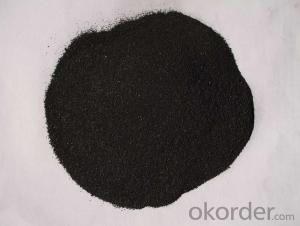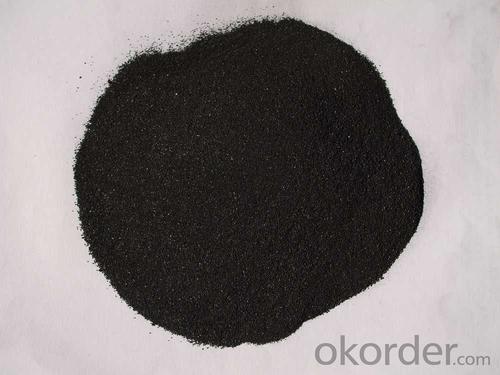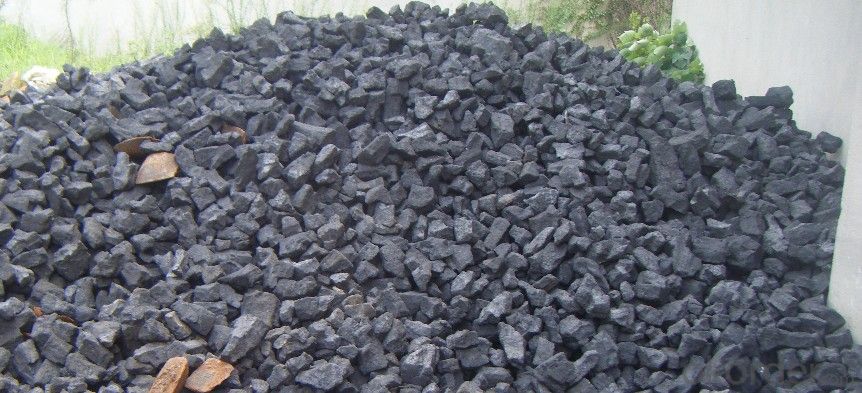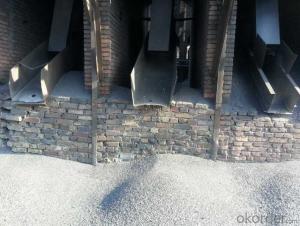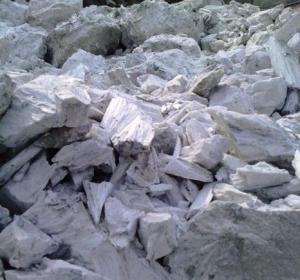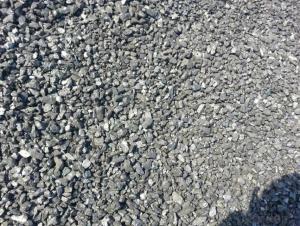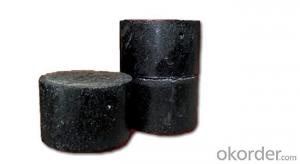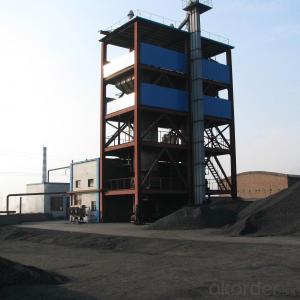Calcined Anthracite Coal Carbon Raiser for Steelmaking
- Loading Port:
- Tianjin
- Payment Terms:
- TT or LC
- Min Order Qty:
- 20 m.t.
- Supply Capability:
- 10000 m.t./month
OKorder Service Pledge
OKorder Financial Service
You Might Also Like
Quick Details
Place of Origin: Ningxia, China (Mainland)
Application: steel making
Shape: granule
Dimensions: FC90-95%
Product Type: Carbon Additive
C Content (%): 90-95% MIN
Working Temperature: -
S Content (%): 0.5%MAX
N Content (%): -
H Content (%): 0.6%MAX
Ash Content (%): 8.5%MAX
Volatile: 2%MAX
ADVANTAGE: low ash & sulfur
COLOR: Black
RAW MATERIAL: TaiXi anthracite
Packaging & Delivery
| Packaging Details: | In 1MT plastic woven bag. |
|---|---|
| Delivery Detail: | 30-40DAYS |
Specifications Calcined Anthracite Coal Carbon Raiser for Steelmaking Carbon Additve low Ash,S,P Structure Calcined Anthracite Coal Carbon Raiser for Steelmaking Shape: granule Dimensions: FC90-95% Product Type: Carbon Additive C Content (%): 90-95% MIN Working Temperature: - S Content (%): 0.5%MAX N Content (%): - H Content (%): 0.6%MAX Ash Content (%): 8.5%MAX Volatile: 2%MAX ADVANTAGE: low ash & sulfur COLOR: Black RAW MATERIAL: TaiXi anthracite Feature Calcined Anthracite Coal Carbon Raiser for Steelmaking Specifications (%): Grade F.C Ash V.M Moisture S Size CR-95 ≥95 <4 <1 <1 <0.3 0-30mm CR-94 ≥94 <4 <1 <1 <0.3 CR-93 ≥93 <6 <1 <1 <0.4 CR-92 ≥92 <7 <1 <1 <0.4 CR-91 ≥91 <8 <1 <1 <0.4 CR-90 ≥90 <8.5 <1.5 <2 <0.4 Image Calcined Anthracite Coal Carbon Raiser for Steelmaking FAQ: Calcined Anthracite Coal Carbon Raiser for Steelmaking Why we adopt carbon additive? Carbon Additives used as additive in steel making process. It made from well-selected Tai Xi anthracite which is low in content of ash, sulphur, phosphorus, high heat productivity, high chemically activation. Mainly industry property of it is: instead of traditional pertroleum coal of Carbon Additives, reduce the cost of steelmaking. Advantage: Calcined Anthracite Coal Carbon Raiser for Steelmaking 1.High quality and competitive price. 2.Timely delivery. 3.If any item you like. Please contact us. Your sincere inquiries are typically answered within 24 hours.
FC>95% ASH<4% S<0.3%
It is made from TaiXi anthracite.
instead of pertrol coke reduce the cost
As buyer's request.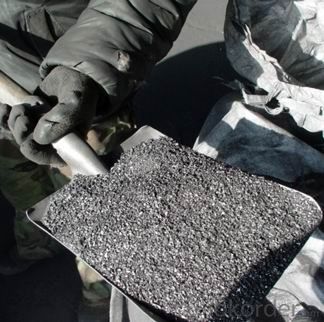
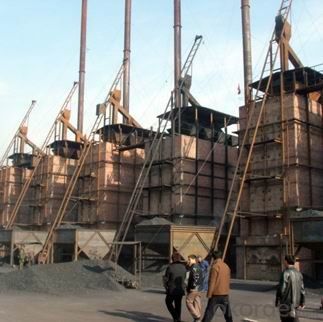
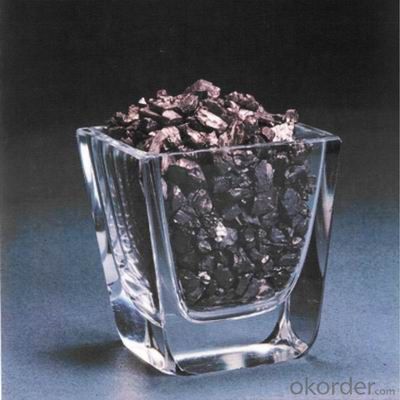
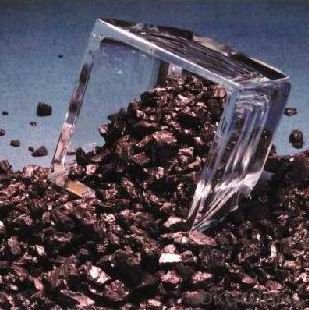
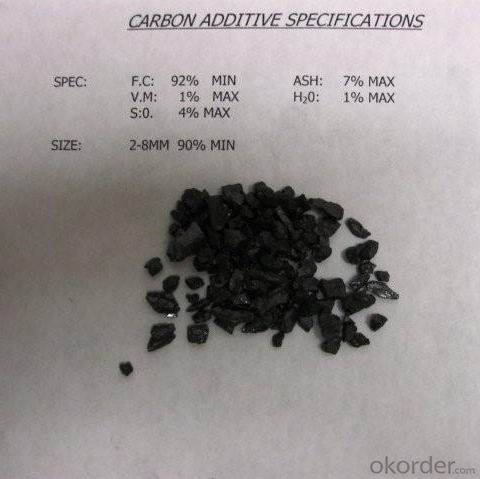
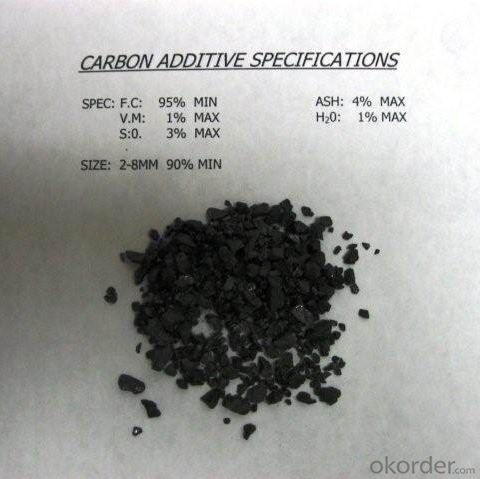
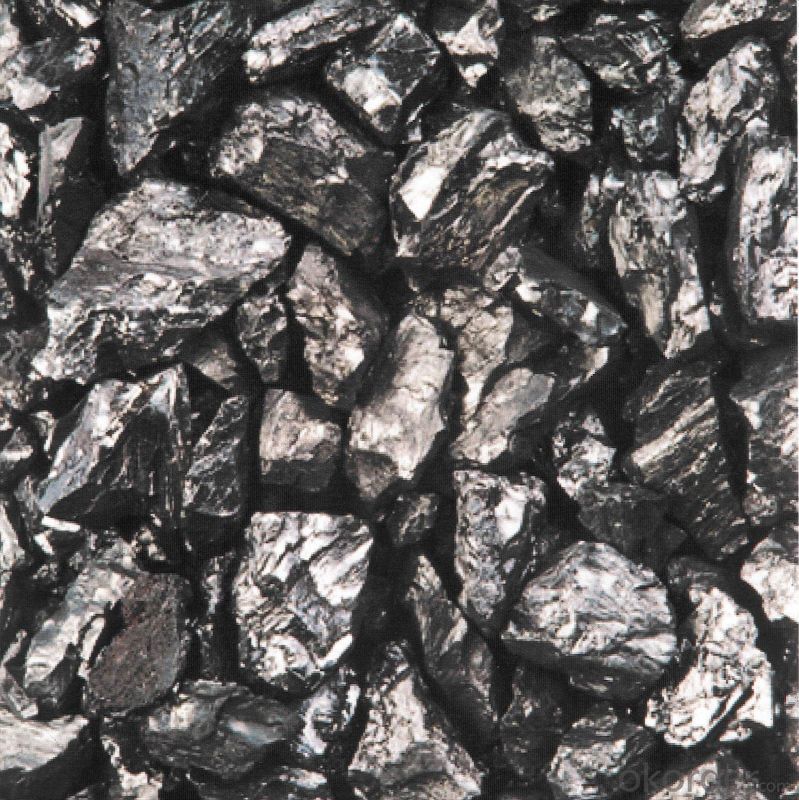
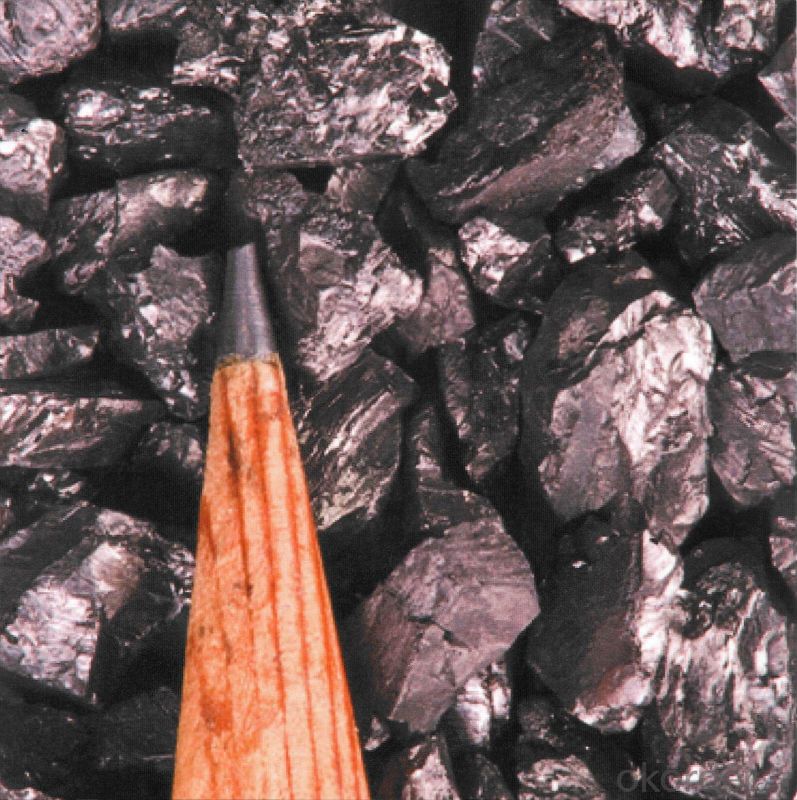

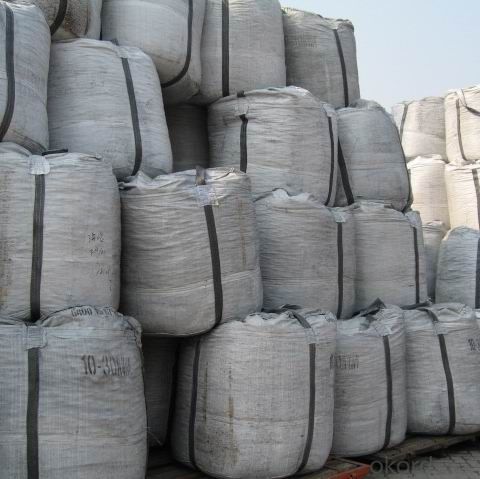
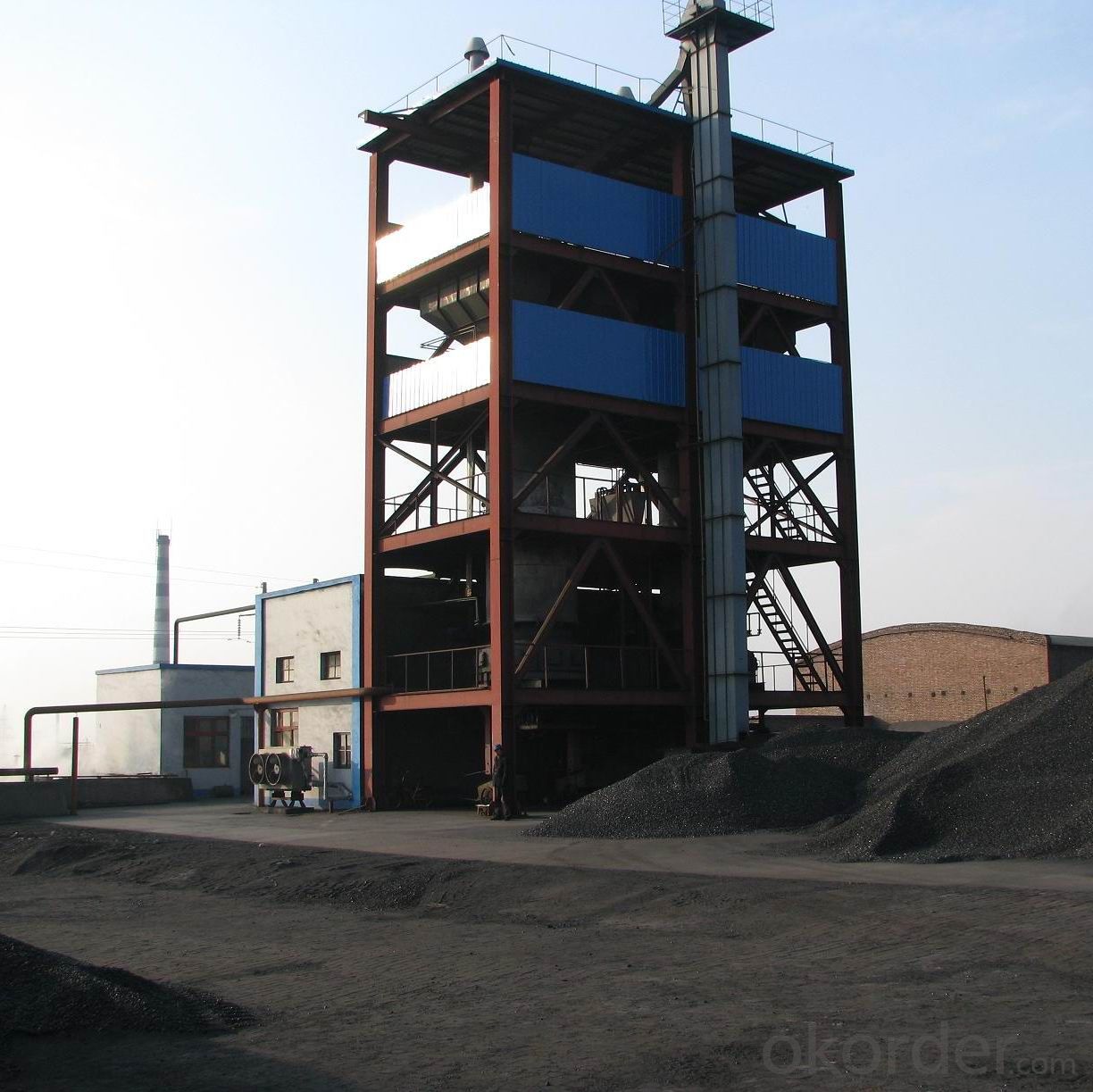
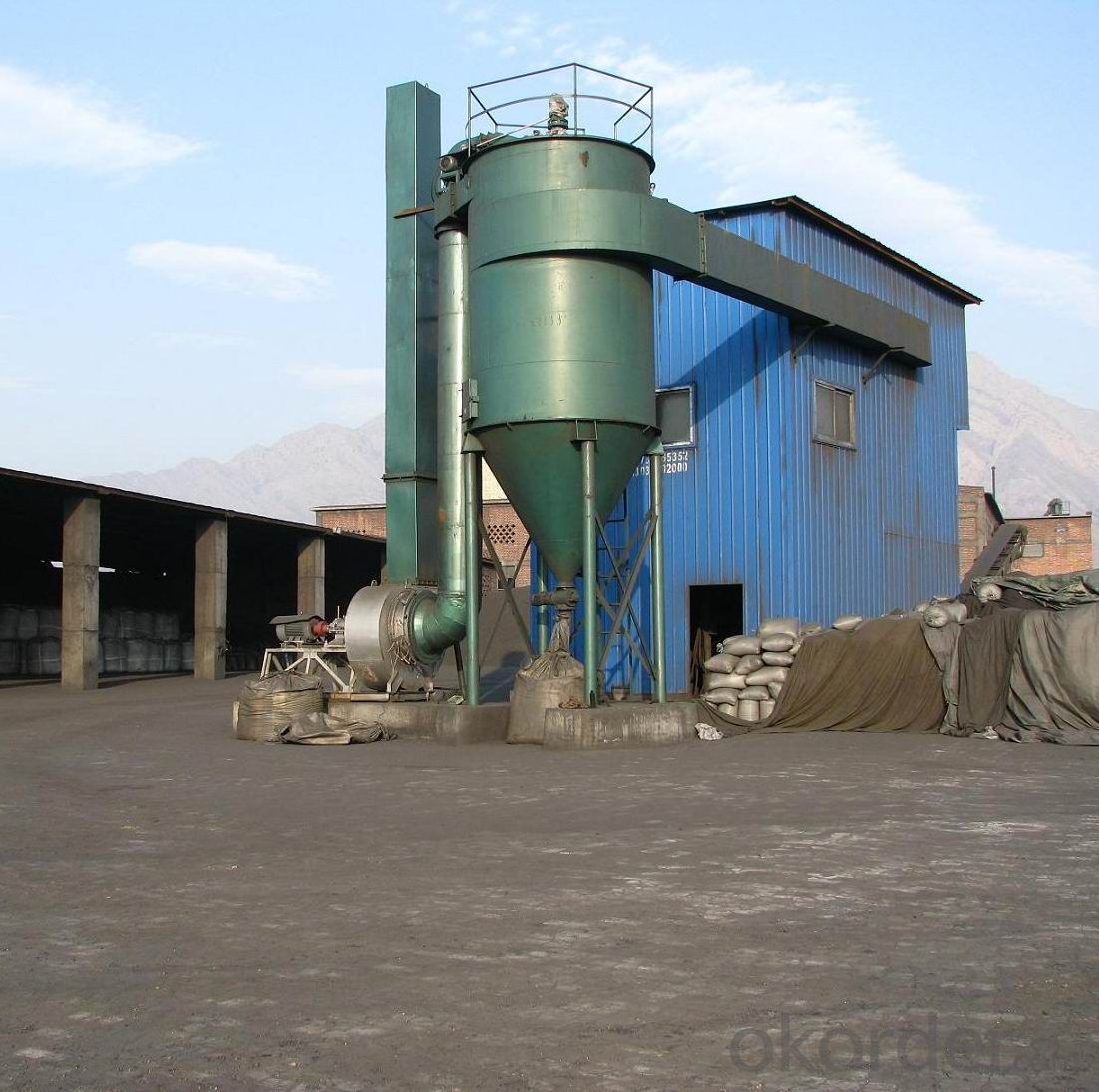
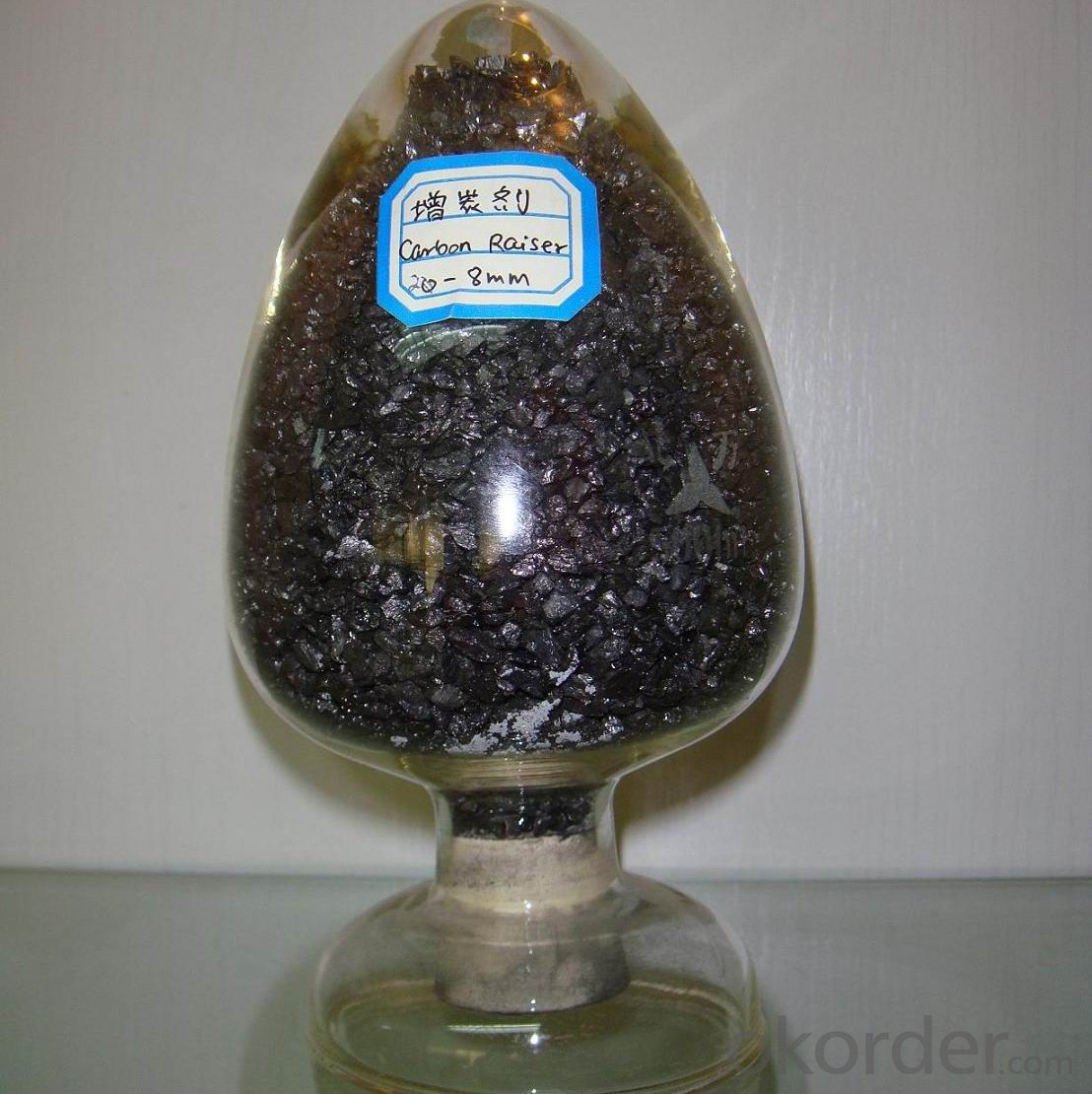
- Q: What is the role of carbon in the formation of diamonds?
- The creation of diamonds heavily relies on carbon, as it is the sole element accountable for their existence. Diamonds are generated in the deep recesses of the Earth's mantle, amidst extreme temperature and pressure. When carbon atoms face immense heat and pressure, they undergo a process called graphitization, which entails rearranging their atomic composition and transitioning into a crystal lattice structure, ultimately leading to the formation of diamonds. The process commences with carbon-rich materials, such as organic matter or carbon-bearing minerals, encountering the intense heat and pressure prevalent in the Earth's mantle, generally at depths ranging from 150 to 200 kilometers. In such circumstances, the carbon atoms within these materials are compelled to bond in a distinctive manner, producing the rigid, three-dimensional lattice structure that characterizes diamonds. The formation of diamonds necessitates specific geological conditions, namely temperatures surpassing 900 degrees Celsius and pressures surpassing 725,000 pounds per square inch (50,000 atmospheres). These extreme conditions are typically present in regions where ancient tectonic plates collide or during volcanic eruptions that bring diamonds to the Earth's surface. The ability of carbon to form robust covalent bonds with other carbon atoms is what facilitates the transformation into diamonds. Each carbon atom establishes four sturdy covalent bonds, giving rise to a tetrahedral structure. This formidable bonding empowers diamonds with exceptional hardness, rendering them one of the toughest substances known to humanity. To sum up, carbon plays a vital part in the formation of diamonds, undergoing graphitization amid immense temperature and pressure to create the distinct crystal lattice structure that grants diamonds their extraordinary properties. Without carbon, the creation of diamonds as we presently comprehend them would be unattainable.
- Q: What are the consequences of increased carbon emissions on coral reefs?
- Coral reefs are severely impacted by the increased emission of carbon, resulting in numerous consequences. One major effect is the occurrence of ocean acidification, which happens when excess carbon dioxide is absorbed by seawater, causing a decrease in pH levels. This acidification hampers the ability of corals to construct their calcium carbonate skeletons, making them more susceptible to erosion and breakage. Moreover, elevated levels of carbon dioxide in the atmosphere contribute to global warming, leading to the rise of ocean temperatures. Consequently, coral bleaching occurs as corals expel the symbiotic algae responsible for their vibrant colors. Without these algae, corals become stressed, lose their color, and become more vulnerable to disease and death. Additionally, increased carbon emissions contribute to alterations in ocean currents and weather patterns, resulting in more frequent and intense storms. These storms physically damage coral reefs, causing further destruction to already fragile ecosystems. The consequences of increased carbon emissions on coral reefs are profound and devastating. The decline of coral reefs not only impacts the biodiversity of the oceans but also has significant implications for human populations that rely on reefs for sustenance, income, coastal protection, and tourism. It is imperative to reduce carbon emissions and take immediate action to safeguard and preserve these invaluable ecosystems.
- Q: How does carbon pricing work?
- Carbon pricing is an approach that utilizes the market to decrease greenhouse gas emissions by placing a value on carbon emissions. This is achieved by assigning a financial cost to the release of carbon dioxide and other greenhouse gases into the atmosphere, which greatly contribute to climate change. There exist two primary forms of carbon pricing mechanisms: carbon taxes and cap-and-trade systems. Under a carbon tax, a fixed price per metric ton of carbon emissions is established, and emitters are obligated to pay this tax according to their emissions. The tax can be imposed at different points in the supply chain, such as during extraction, production, or consumption. The goal of a carbon tax is to create a economic deterrent for emitting carbon and motivate industries and individuals to reduce their emissions. On the other hand, cap-and-trade systems impose a limit or cap on the total amount of carbon emissions permitted within a specific jurisdiction. This cap is divided into allowances, which represent the right to emit a particular amount of carbon. These allowances are either distributed or auctioned to emitters in the form of permits. Emitters can then trade these permits amongst themselves in a market. If an emitter surpasses their allocated allowances, they must purchase additional permits from those who have surplus allowances. This establishes a market-based incentive for emission reduction, as those who can more cost-effectively decrease their emissions can sell their excess allowances to those who are unable to. Both carbon taxes and cap-and-trade systems aim to incorporate the cost of carbon emissions into the economy, making pollution more expensive and encouraging the adoption of cleaner technologies and practices. By assigning a value to carbon, these mechanisms provide economic signals that urge businesses, industries, and individuals to invest in low-carbon alternatives, energy efficiency, and innovation. Additionally, they generate revenue for governments, which can be utilized to fund efforts in climate change mitigation and adaptation, renewable energy projects, or to reduce other taxes. Overall, carbon pricing mechanisms are designed to establish economic incentives for reducing greenhouse gas emissions, facilitating the transition to a low-carbon economy, and mitigating climate change. While they may not be a perfect solution, they are widely acknowledged as one of the most effective tools for driving emission reductions and combating climate change.
- Q: How can individuals reduce their carbon footprint?
- Achieving a more sustainable future and reducing our carbon footprint can be accomplished through various actions. Consider the following effective methods: 1. Energy consumption reduction: The conservation of energy plays a vital role in decreasing carbon emissions. Make the switch to energy-efficient appliances, turn off lights when not in use, unplug electronics when not in use, and take advantage of natural lighting whenever possible. Additionally, adjusting thermostats to energy-saving temperatures and utilizing programmable thermostats can significantly decrease energy consumption. 2. Utilize renewable energy sources: A transition to renewable energy sources, such as solar or wind power, can drastically reduce carbon emissions. Install solar panels on rooftops, or explore the option of purchasing green energy from utility companies that provide renewable alternatives. 3. Decrease water usage: Indirectly, conserving water aids in reducing energy consumption and carbon emissions. Repair leaky faucets, shorten shower durations, install water-saving fixtures, and gather rainwater for outdoor activities. Additionally, consider implementing drought-resistant landscaping to minimize water usage for gardening purposes. 4. Consume mindfully: When making purchases, opt for sustainable choices. Select durable and long-lasting items, repair and reuse rather than replacing, and prioritize products made from recycled or sustainable materials. Furthermore, support local and sustainable businesses that prioritize eco-friendly practices. 5. Minimize transportation emissions: Reduce reliance on private vehicles by utilizing public transportation, carpooling, biking, or walking whenever feasible. If owning a car is necessary, choose electric or hybrid vehicles. Regular maintenance, proper tire inflation, and avoiding unnecessary idling all contribute to decreasing transportation emissions. 6. Embrace a plant-based diet: The food industry has a considerable carbon footprint, particularly due to livestock production. By reducing meat consumption or adopting a plant-based diet, carbon emissions can be significantly reduced while also offering health benefits. If a complete plant-based diet is not feasible, try incorporating more vegetarian or vegan meals into your eating habits. 7. Decrease waste generation: Waste contributes to greenhouse gas emissions, making waste reduction crucial. Opt for products with minimal packaging, diligently recycle, compost organic waste, and avoid single-use plastics. Plan meals, only purchase what is needed, and properly store leftovers to minimize food waste. 8. Support environmental initiatives and organizations: Engage with local and global organizations dedicated to environmental conservation. Take part in community clean-ups, support reforestation efforts, and advocate for sustainable practices in your workplace and community. By implementing these strategies into our daily lives, individuals can make a significant impact in reducing their carbon footprint and combating climate change. It is important to remember that every small action matters, and collectively, we can create a sustainable future for future generations.
- Q: What are the consequences of increased carbon emissions on public health systems?
- Public health systems are significantly affected by the increase in carbon emissions. One of the main consequences is the worsening of respiratory diseases like asthma, COPD, and bronchitis. These conditions are aggravated by the presence of fine particulate matter (PM2.5) and ground-level ozone, both of which can deeply penetrate the respiratory system. Furthermore, higher levels of carbon emissions are linked to a higher occurrence of cardiovascular diseases. The release of fine particulate matter and other pollutants from carbon-emitting sources can enter the bloodstream, leading to inflammation, oxidative stress, and the development of atherosclerosis. This can eventually result in heart attacks, strokes, and other cardiovascular complications. Additionally, the spread of infectious diseases is also influenced by climate change, which is driven by carbon emissions. The rise in temperatures and changes in precipitation patterns create favorable conditions for disease-carrying vectors like mosquitoes and ticks. This facilitates the transmission of diseases such as malaria, dengue fever, Lyme disease, and Zika virus. Moreover, extreme weather events and natural disasters associated with climate change can disrupt healthcare infrastructure and limit access to essential services, further impacting public health systems. Moreover, mental health is affected by the increase in carbon emissions as well. The degradation of the environment caused by carbon emissions contributes to feelings of anxiety, stress, and depression, often referred to as eco-anxiety or climate grief. The loss of biodiversity, destruction of natural habitats, and the general uncertainty about the future can have harmful effects on individuals and communities, requiring additional resources and support from public health systems. In conclusion, the consequences of increased carbon emissions extend far beyond the environment and have a profound impact on public health systems. They contribute to the prevalence of respiratory and cardiovascular diseases, facilitate the spread of infectious diseases, and affect mental health. It is crucial to address carbon emissions and adopt sustainable practices to mitigate these consequences and protect the well-being of individuals and communities.
- Q: How is carbon used in the production of graphite?
- Carbon is a key component in the production of graphite. Graphite is a crystalline form of carbon with a unique structure that gives it its distinctive properties. To produce graphite, carbon is subjected to extreme heat and pressure, which causes the carbon atoms to rearrange into layers of hexagonal rings. These layers are stacked on top of each other, forming the graphite's characteristic layered structure. The process begins with a high-quality carbon source, such as petroleum coke or coal tar pitch. These carbon sources are first heated to very high temperatures to eliminate impurities and convert them into a pure carbon material called coke. The coke is then ground into a fine powder and mixed with a binder, usually a form of pitch, to form a paste. This paste is then shaped into the desired form, such as rods or blocks, and subjected to high temperatures in a furnace. The heat causes the binder to decompose and the carbon atoms to rearrange into the hexagonal layers that are characteristic of graphite. The high pressure present in the furnace helps to align the carbon layers, resulting in the formation of graphite crystals. After the furnace process, the graphite is further purified through a series of treatments, including chemical washing and acid leaching, to remove any remaining impurities. Finally, the purified graphite is shaped into the desired final product, such as pencils, electrodes, or lubricants, through processes like extrusion or machining. In summary, carbon is used in the production of graphite by subjecting a carbon source to high temperatures and pressures, resulting in the formation of graphite crystals with its unique layered structure. This process allows for the production of various graphite products that are widely used in industries such as manufacturing, electronics, and energy.
- Q: How does carbon affect the pH of rainwater?
- Carbon can affect the pH of rainwater through a process known as carbonic acid formation. When carbon dioxide (CO2) in the atmosphere dissolves in rainwater, it reacts with water molecules to form carbonic acid (H2CO3). This reaction lowers the pH of rainwater, making it more acidic. The carbonic acid dissociates into hydrogen ions (H+) and bicarbonate ions (HCO3-), which further contribute to the acidity of the rainwater. Therefore, increased levels of carbon dioxide in the atmosphere, such as those caused by human activities like burning fossil fuels, can lead to an increase in carbonic acid formation and subsequently lower the pH of rainwater, resulting in acid rain.
- Q: What is carbon nanomembrane?
- A carbon nanomembrane (CNM) is a thin layer of carbon atoms arranged in a lattice structure, with a thickness of just one atom, making it one of the thinnest materials known. To create CNMs, a precursor material is deposited onto a substrate and then transformed into a pure carbon layer through heat or chemical processes. The unique properties of carbon nanomembranes have generated significant interest in science and technology fields. CNMs are highly impermeable to gases and liquids, making them ideal for applications like gas separation and filtration. They also possess excellent electrical conductivity, making them suitable for electronic devices and sensors. Moreover, carbon nanomembranes can be tailored with specific pore sizes and chemical functionalities, enabling their use in molecular sieving and biological applications. They have shown potential in drug delivery, water purification, and tissue engineering. Additionally, CNMs exhibit impressive mechanical strength and flexibility, providing opportunities for use in lightweight and flexible electronics. In conclusion, carbon nanomembranes offer a versatile and exciting platform for various applications. Ongoing research and development in this field aim to further explore and utilize the unique properties of CNMs to advance different industries.
- Q: What is the concept of carbon neutrality?
- The concept of carbon neutrality refers to the goal of achieving a balance between the amount of carbon dioxide emissions released into the atmosphere and the amount of carbon dioxide removed from the atmosphere. It is an approach to combatting climate change and reducing greenhouse gas emissions by aiming to offset the carbon footprint of an individual, organization, or even an entire country. To achieve carbon neutrality, one must first measure and understand the amount of carbon dioxide emissions being generated. This includes assessing emissions from various sources such as energy production, transportation, agriculture, and industrial processes. Once the emissions are quantified, efforts are made to reduce these emissions through energy efficiency, transitioning to renewable energy sources, and implementing sustainable practices. However, not all emissions can be eliminated entirely. In such cases, carbon offset projects are utilized to neutralize the remaining emissions. These projects involve activities that remove carbon dioxide from the atmosphere, such as reforestation, afforestation, or investing in renewable energy projects. By supporting these initiatives, carbon neutrality can be achieved by balancing the emissions produced with carbon removal or reduction efforts. The concept of carbon neutrality is crucial in the fight against climate change as it acknowledges the responsibility of individuals, organizations, and governments to take action in reducing their impact on the environment. By striving for carbon neutrality, we can effectively contribute to mitigating climate change and creating a more sustainable future.
- Q: Can carbon 14 identify the age of porcelain?
- Identification of porcelain by carbon 14 is not very accurate.The so-called carbon fourteen assay, radiocarbon dating, uses the carbon fourteen, which is widely found in nature, to measure the age of animals and plants. In prehistoric and ancient, the smaller the impact of human activities on the earth's environment, and carbon in nature fourteen proportions remain constant, animals and plants in the survival time, due to its in vivo The new supersedes the old. sake, carbon fourteen also remained constant; however, the once dead, in fourteen carbon will continue to decay, the half-life is 5730 years, in the sealed state and the outside world is obviously different, which is the principle of carbon fourteen dating. We must note that animals and plants belong to the organic matter. However, most cultural relics, such as porcelain, pottery and bronze, are inorganic. Therefore, the application of carbon fourteen dating in archaeology is very limited.
Send your message to us
Calcined Anthracite Coal Carbon Raiser for Steelmaking
- Loading Port:
- Tianjin
- Payment Terms:
- TT or LC
- Min Order Qty:
- 20 m.t.
- Supply Capability:
- 10000 m.t./month
OKorder Service Pledge
OKorder Financial Service
Similar products
Hot products
Hot Searches
Related keywords
